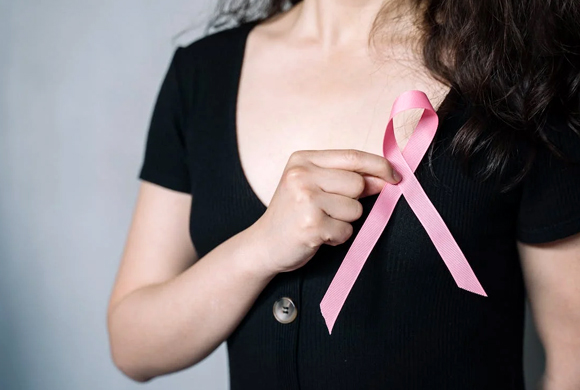Breast cancer accounts for 25-32% of all cancers in women in India and is diagnosed in one woman every four minutes. Alarmingly, more than 70% of cases in India are detected at advanced stages, making early detection and regular self-exams crucial for improving survival rates.
The Warning Signs of Breast Cancer
Here’s a list of warning signs that you should be aware of. Remember, not all lumps and changes are breast cancer. If you are unsure whether your symptoms are normal, you should seek medical attention.
- New lump in the breast/underarm
- Thickening of the breast
- Change in the size and shape of the breast
- Swelling
- Irritation or dimpling of skin around the breast
- Flaky skin
- Redness
- Nipple pain
- A nipple that has changed position
- Nipple discharge (other than breastmilk)
- Pain in any area of the breast
- Bulging of the skin
- Soreness
- Rash
Now that you know the basic symptoms and warning signs, you may proceed with a breast self-examination in the comfort of your home.
How to Do a Breast Self-Exam?
It is important to find breast cancer early to be treated successfully. A breast self-examination at home allows you to examine your breast for any visual or physical changes.
Visual Inspection
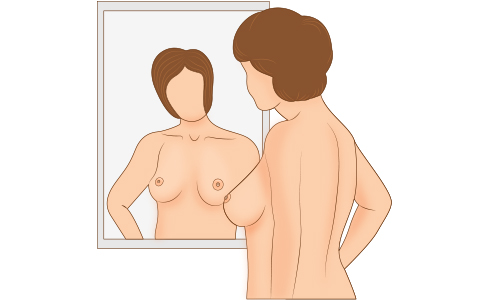
STEP 1: Start breast self-examination (BSE) by looking at your breasts in the mirror with your shoulders straight and your arms on your hips.
- Look at the size, shape, and colour of the breasts.
- Look for any distortion or swelling in the breasts.
- Look for any warning signs or symptoms (mentioned above).
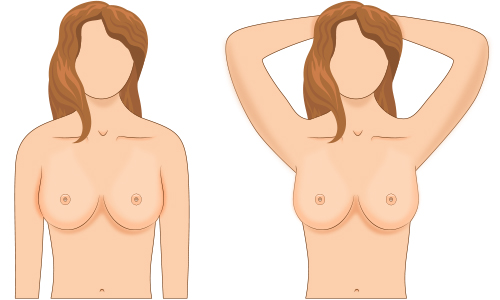
STEP 2: Raise your arms above the head and look for the same warning signs.
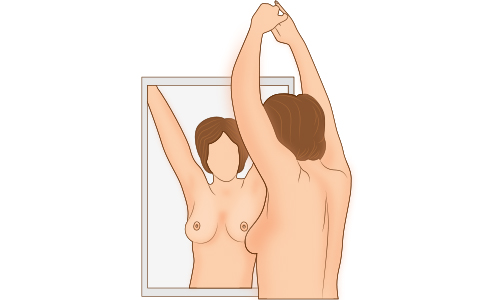
STEP 3: Look for any signs of fluid coming out of your nipples (watery, milky, yellow fluid or blood).
Manual Inspection
Step 4: Examine your breasts while lying down.
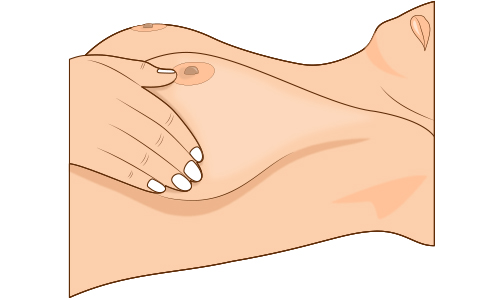
- Lie down and put a pillow under your shoulder. Place your left arm behind your head. Use your right hand to feel your left breast.
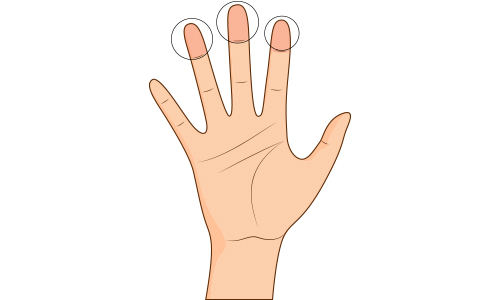
- Use gentle pressure to touch and feel your breasts with the three middle fingers (finger pads) by keeping the fingers flat and together.
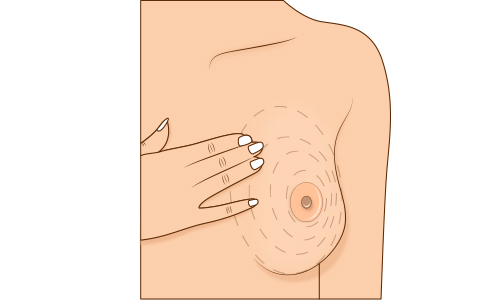
- Press down with your finger pads and move in a circular motion.
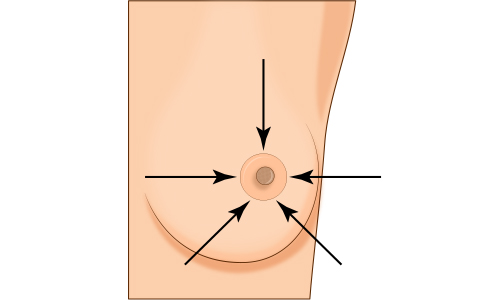
- Cover the entire breast from the armpit, top to bottom, side to side.
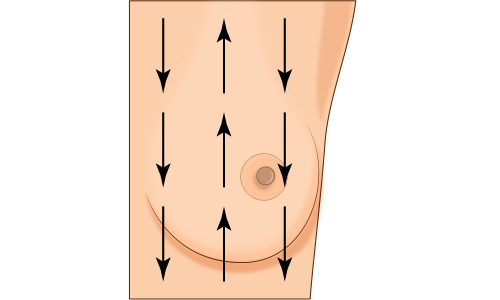
- Move the fingers up and down vertically as if you are mowing a lawn.
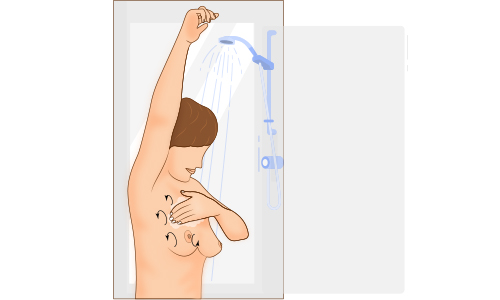
- Feel all the tissue in your breast using light pressure to reach the tissue beneath the skin, medium pressure to examine the middle of the breast, and firm pressure to check the deep tissue in the back.
STEP 5: Feel your breasts while standing or sitting
- Follow the same hand movement described in STEP 4 while in the shower or sitting.
What to Do if You Notice a Lump?
Don't panic! Most women have lumpy areas in their breasts all the time, which are non-cancerous. It could be due to a benign breast condition, hormonal changes, or injury.
When to Consult a Gynaecologist for Breast Cancer?
Consult a gynaecologist immediately if you notice any signs or symptoms of breast cancer that worry you. Women over 40 should see a doctor every year. If any abnormalities are found, your doctor may recommend extra visits. You can also do a breast self-exam (BSE) once a month. A clinical breast examination is recommended every 3 years for the age group of 20–30 years. If you are over 45 years old, mammography is recommended yearly or as the doctor advises on personal risk factors.
Who Is at a High Risk of Breast Cancer?
- Being a woman
- Ageing (above 50 years)
- Inherited genes such as BRCA1 and BRCA2
- Family history of breast/ovarian cancer
- Prior history of breast cancer
- Breast atypia (changes in breast cells)
- Lobular carcinoma
- Obesity (BMI of more than 30)
- Hormone replacement therapy
- Early menstruation
- Late Menopause
- Delayed childbirth
- Not having children
- An inactive lifestyle
Women with inherited BRCA1 or BRCA2 gene mutations have up to a 72% chance of developing breast cancer, making family history crucial for early detection and risk management. Studies also show postmenopausal women with a BMI over 30 face a higher risk. The World Cancer Research Fund says regular exercise and maintaining a healthy weight can lower this risk by 10-20%.
Final Words
In 2024, there are over 4 million breast cancer survivors worldwide, with early detection offering hope. Improved screening has helped India's five-year survival rate reach 66.4%, though this varies, with higher rates in cities compared to rural areas. Staying informed and vigilant—through regular self-checks and timely doctor visits—can save lives.
Don’t forget to share this information with all the women you know!
Disclaimer: Dear Readers, this post is to create awareness and be prepared. Trust only reliable sources to gain knowledge about breast cancer. To know more about breast cancer, follow the official website.

